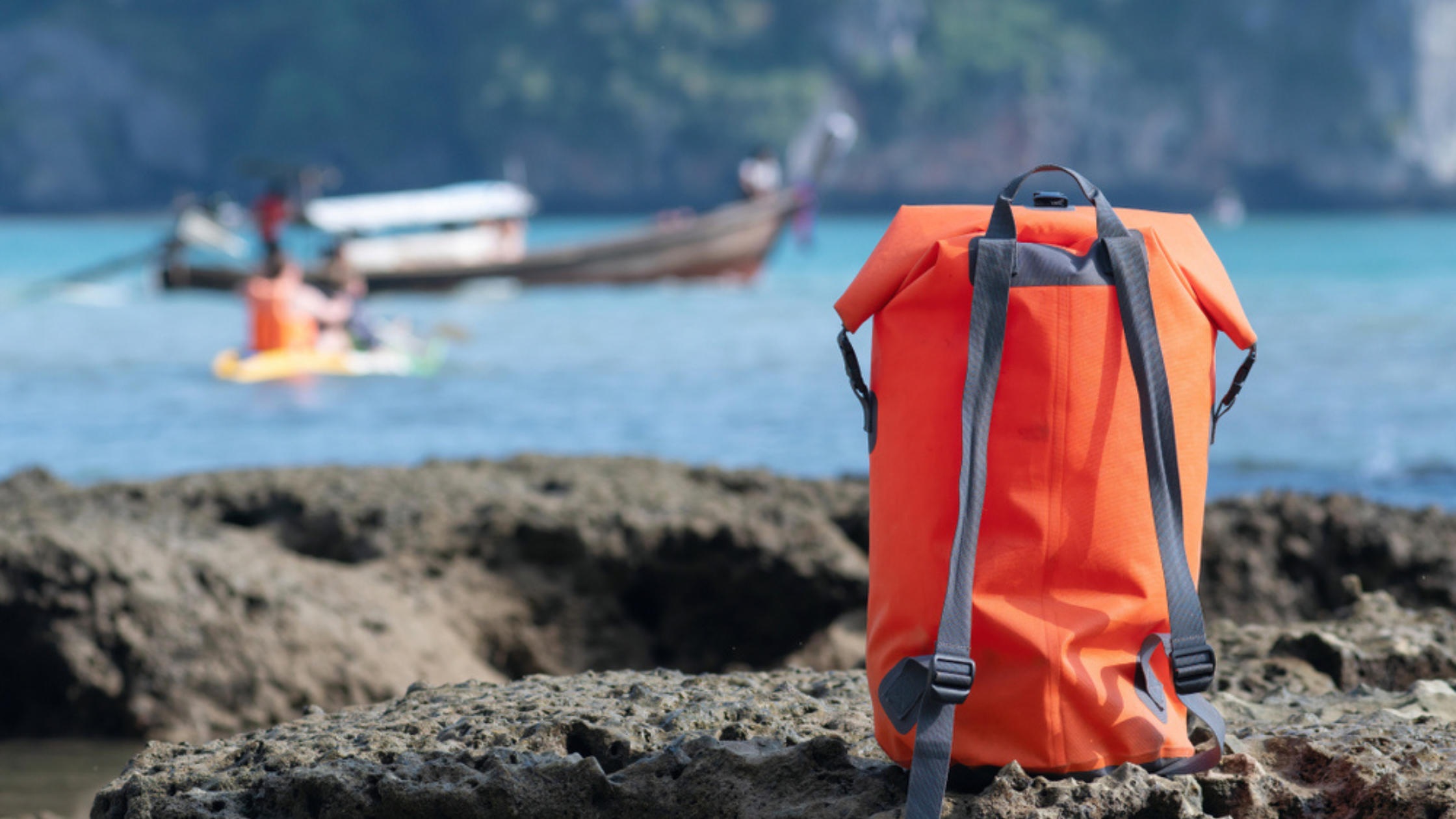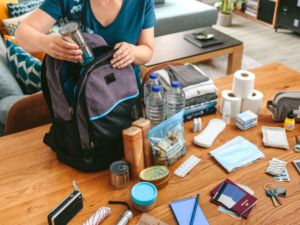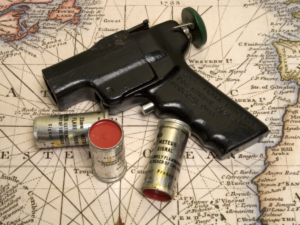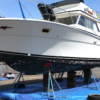
An abandon ship kit, or a “ditch” bag, is sort of like insurance. You hope to never use it but if you need it, you’d better have a good one. Freak accidents can happen even on a well-found ship and there’s very little time to mull over what you’ll need if you must leave the boat in a hurry so it’s important to pre-pack as well as possible.
The ditch bag is the emergency kit you grab as you head for the life raft. You can start with a large duffel bag or choose a professionally designed floating ditch bag with pockets for essential items like the one designed by ACR. There’s a long of list of items that should go into an abandon ship bag, especially if you plan to travel far offshore, but there are other realities to consider when packing one.
- – Do you have room for a ditch bag on the boat and where will you store it?
- – Will you remember to grab supplemental items that aren’t stored in the ditch bag like the ship’s beacon (EPIRB), everyone’s personal beacons (PLBs), handheld VHF radio, handheld GPS, paper charts, ship’s papers and personal documents like passports, food and extra water? (Hint, make yourself an emergency ditch checklist to go along with your ditch bag.)
- – Can even the smallest of your crew move the ditch bag from its storage location to on deck and into a life raft? If it’s too heavy or bulky, it may be left behind.
- – How much space will it take up in a cramped life raft when the whole crew is aboard?
25 items to put into your abandon ship kit

Preparing an emergency bag | David Pereiras on Shutterstock
Once you’ve addressed the points above, consider these 25 items as a start of a solid ditch bag but remember, there are many other items that may be useful if you have the room and the strength.
- Space blanket – reflective is best to keep you warm and for signaling ships passing by
- Dry bag – take more than one if you can
- Duct tape – toss in some thin wire and electrical tape as well
- Multi-tool – and/or knife
- Length of extra line – 50 feet at least to use as a drogue or to tie other floating equipment like coolers and the dinghy together with the life raft
- Flashlights and headlamps – preferably LED-powered with extra batteries
- Chemical light sticks – like those used by divers that don’t need a battery
- Laser pointer and/or strobe light – for nighttime signaling
- Sunglasses – and extra prescription glasses
- Extra T-shirts and warm gear – to manage exposure and for sun protection
- Hats with clips – things go flying in a life raft and you’ll need head protection
- Sponges and a towel – sitting in water in a raft guarantees saltwater sores so sop it up
- Water container – plastic or metal bottles work best
- Food – freeze dried food or energy bars can be kept in a life raft for an extended period but grab extra provisions if you have time before ditching
- Medical kit – pack a small, dedicated kit into the ditch bag but also grab the ship’s kit if possible
- Medications and supplements – include personal and seasickness meds beyond the medical kit
- Sunscreen and lip balm – especially important for life rafts with no tops

Signal flare gun and 3 rounds on top of marine map | Leo on Shutterstock
- Flares – handheld and aerial with a 12-gauge gun
- Whistle or air horn – you want to be seen and heard when rescuers are nearby
- Signal mirror – the best is a polished metal plate that will reflect the sun but won’t cut the life raft material
- Sea dye – SOLAS-grade to mark your spot and increase your chances of being seen
- Fishing supplies – pack at least some line and hooks
- Funnel – to capture any condensation for drinking water
- Trash bags, Ziplock bags and aluminum foil – good for keeping gear together and dry
- Bailing bucket – also used for a variety of uses including as a toilet
Whether it’s shipboard fire or a breached hull, boats can falter and when they do, you need to be prepared. Put together a ditch bag and check its condition and contents once annually or before setting off on an extended passage. Even if you never use it, a ditch bag is insurance that brings peace-of-mind.








